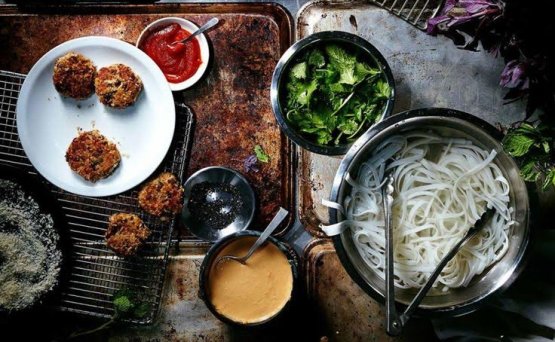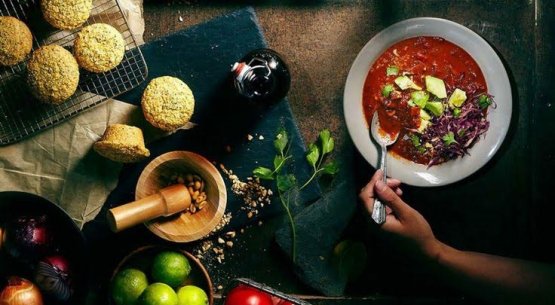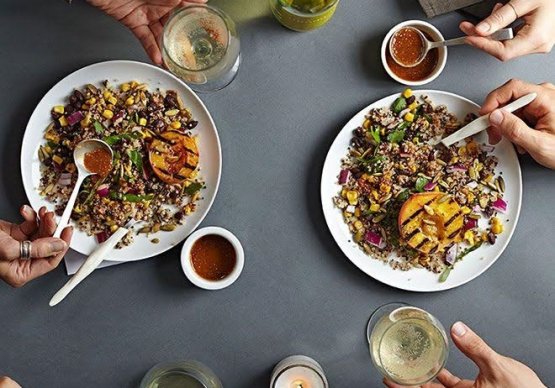25-12-2015
Luck comes from food
Even during the Holidays, it is best to serve good, sustainable and auspicious ingredients

This week, Lisa Casali’s column is dedicated to the Holidays. And most of all to what will liven up our next meals, suggesting how to make aware and sustainable choices even on this occasion (all photos are by Vanessa Rees)
All holidays are first of all celebrated with food. For this reason, every country and region has its traditions, dishes and ingredients that must be present. In particular, New Year’s celebrations are more linked with food-based superstitions and rituals so that the New Year will be a lucky one. Among the auspicious food, whether you’re superstitious or not, there are certainly 3 that must be avoided, and 3 you can indulge with.
The three ingredients to be avoided are all fish, and a good reason not to serve them this year is that they are over-exploited and need a period of truce. That is to say:
-
Eel or Large Eel – it’s similar to a snake and serving it is a symbolic way of exorcising evil. Eel or large eel (the female) beyond any symbols, is a fish with a very special life. It only reproduces itself in the Sargasso Sea and the new-borns then leave and reach the place their parents come from. This choice of life together with overfishing is dangerously undermining their survival.
-
Salted, Dried or Fresh Cod – a must in the “insalata di rinforzo”, as well as in other dishes from North to South, cod risks disappearing from our tables and traditions for good. Be it salted, fresh or dried, choose other fish so it can rest a little and the species can once again flourish.
-
Anchovies – from the sauce for the boiled meat to the seasoning for the puntarelle it’s hard to give up on anchovies but their abuse, in the past few years, has reduced the catch. At least this year, try to have an anchovyfree menu.

At the same time, however, there’s plenty of other products that are considered auspicious, not only in Italy, and which symbolically bring richness, fertility, prosperity, that is to say:
-
Lentils – according to a popular tradition, on New Year’s one should give each other a wallet full of lentils, wishing the legumes to become money. In Italy they’re the traditional side dish for cotechino on the 31st December but then we forget all about them during the rest of the year.
-
Cabbage – all green-leaved vegetables, especially cabbage, are considered to bring good life in all the West, especially in Northern Europe and North America where they are eaten in salads or as sauerkrauts. In Italy they are not very popular in Holiday menus even though they have all the right attributes: given their anti-age and protective characteristics they can well wish good luck.
-
Fruit – there are many auspicious fruits that shouldn’t be missing from the New Year’s Eve dinner, to enjoy at midnight. Grapes, try to do as in Spain: taste 12 grapes at midnight, and depending on their sweetness or acidity you will have an omen for each month to come. Pomegranate, In Greece they crash it on the floor in front of the entrance to see how much “money” (the grains coming out) will enter the house. Even Mandarins thanks to their round shape are considered a symbol of prosperity and are therefore loved and enjoyed all over the world, especially in China.


There’s one more ingredient that should never be missing in holiday meals and will ensure you have luck and prosperity, that is to say conviviality and sharing food, be it poor or rich, wherever you may be. Let lentils, oily seeds, grapes and pomegranate be your good luck and long lasting life charm for a happy 2016.
Green
Tecniche, ingredienti e iniziative della ristorazione attenta all'ambiente e agli ideali di Expo 2015, viste da Lisa Casali
Environmental scientist and sustainable cooking expert, she's the author of blog Ecocucina on D di Repubblica and of 5 books including “Tutto fa brodo”, "Autoproduzione in cucina" and "Cucinare in lavastoviglie"
Author's articles list